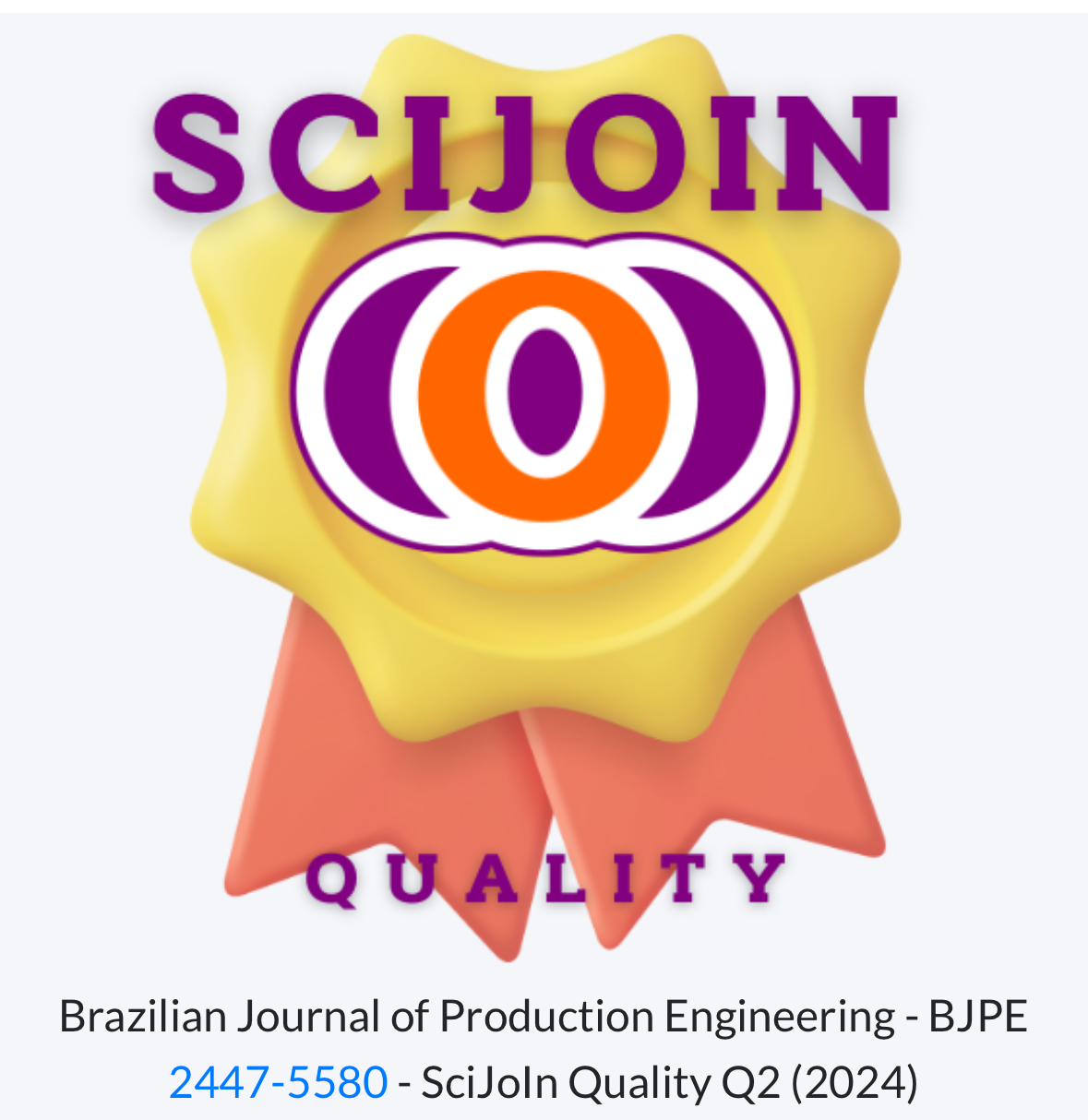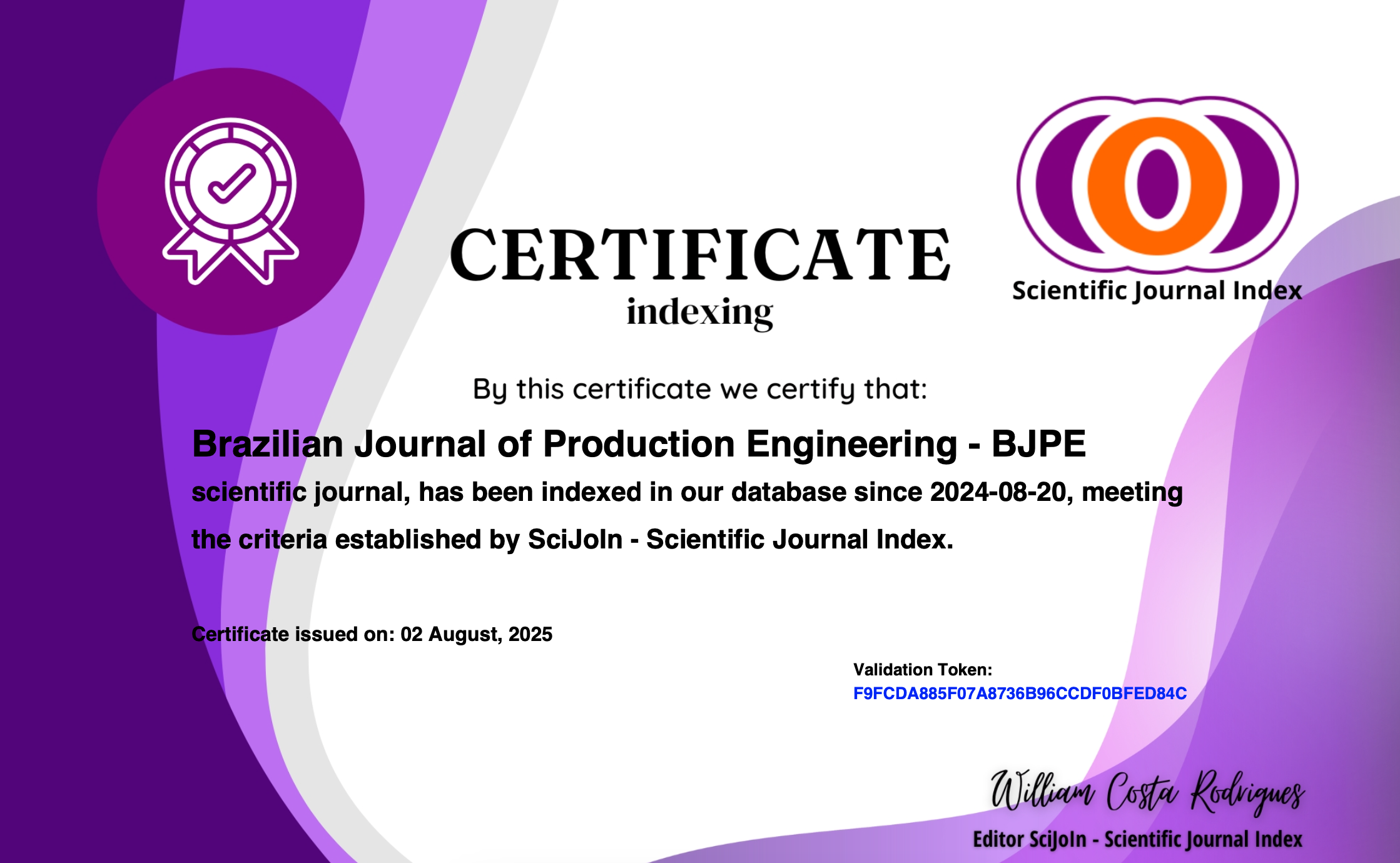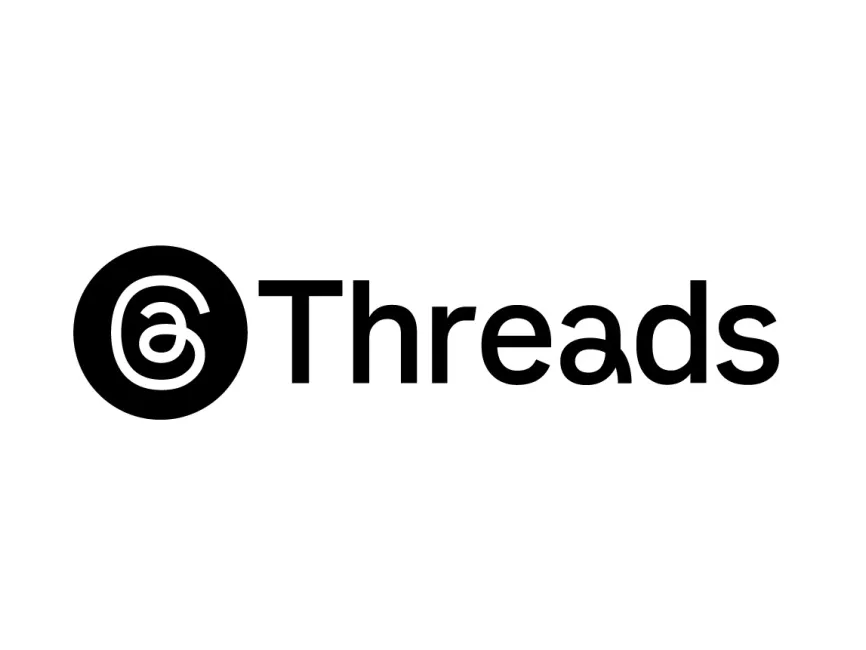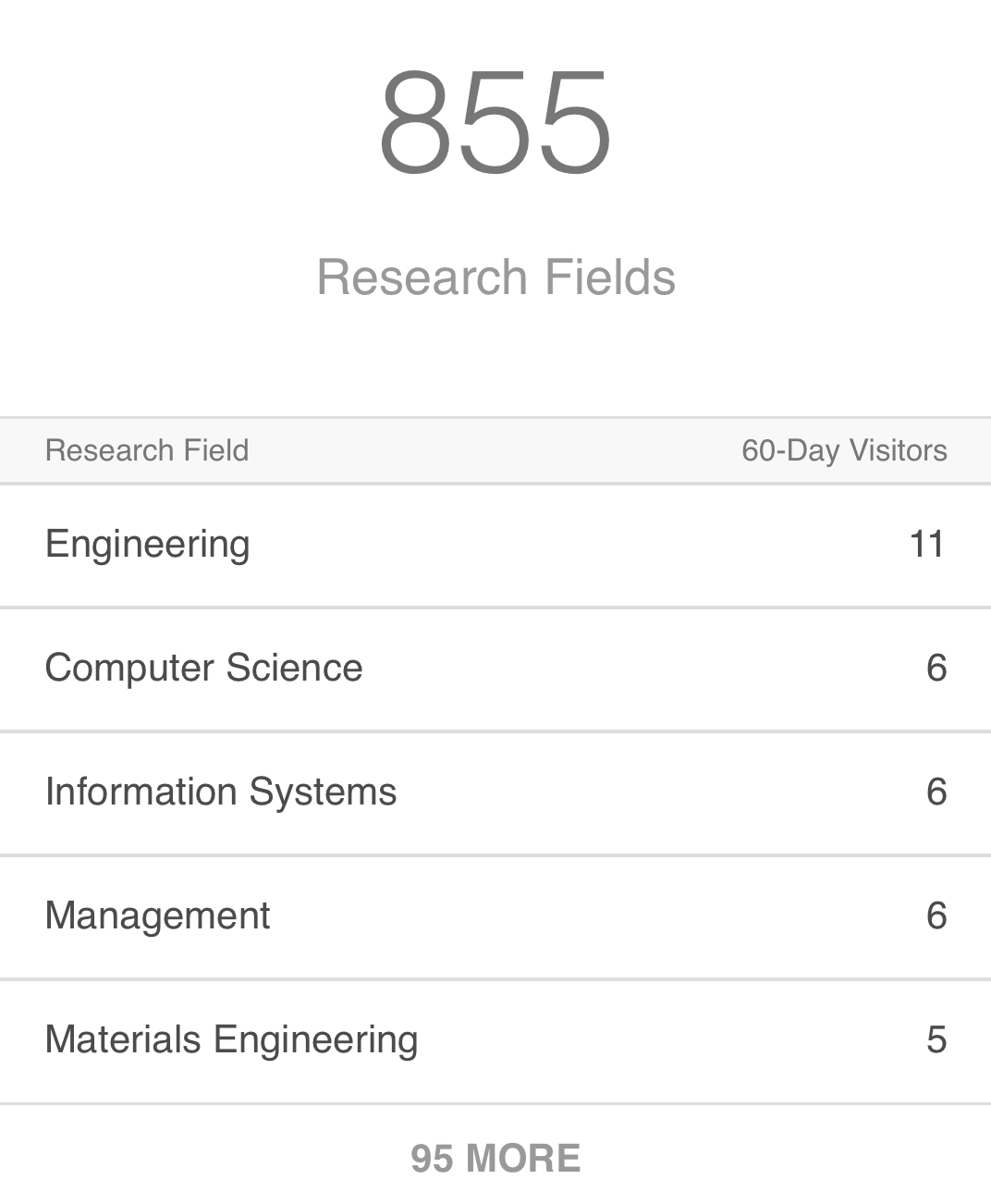Compostos desreguladores endócrinos em água: uma perspectiva bibliométrica
DOI:
https://doi.org/10.47456/bjpe.v8i3.37988Palavras-chave:
Desreguladores endócrinos, Água, BibliometriaResumo
O objetivo deste artigo é investigar a evolução dos estudos científicos sobre compostos desreguladores endócrinos em água. Um estudo bibliométrico foi realizado utilizando o software Citespace e o banco de dados Web of Sience, no período de 1945 a 2021. Foi escolhido o período de maior produção de artigos (2010 a 2021) com 1624 artigos para compor o banco de dados. O software Citespace foi usado para analisar as publicações mais relevantes, países, instituições, autores e palavra-chave. Os resultados mostraram que a China e Estados Unidos contribuíram com o 17, 4 % e 16,5%, das publicações, respectivamente. Estudos sobre compostos desreguladores endócrinos em água mostra-se multidisciplinar abrangendo ecologia de ciências ambientais, química, engenharia, toxicologia, dentre outros campos. Periódicos como Environmental Science Technology, Chemosphere, Science of theTotal Environmental, Water research foram as principais fontes dos trabalhos citados. Os resultados mostraram que as palavras-chave “hormônio”, “acido”, “expressão” e “metabolito, representam as tendências emergentes. Concluímos que os compostos desreguladores endócrinos podem representar um desafio e uma oportunidade de desenvolver metodologias para mitigar estes poluentes emergentes em água natural
Downloads
Referências
Baker, D. R., & Kasprzyk-Hordern, B. (2013). Spatial and temporal occurrence of pharmaceuticals and illicit drugs in the aqueous environment and during wastewater treatment: new developments. The Science of the total environment, 454-455, 442–456. https://doi.org/10.1016/j.scitotenv.2013.03.043
Benotti, M. J., Trenholm, R. A., Vanderford, B. J., Holady, J. C., Stanford, B. D., & Snyder, S. A. (2009). Pharmaceuticals and endocrine disrupting compounds in U.S. drinking water. Environmental science & technology, 43(3), 597–603. https://doi.org/10.1021/es801845a
Benvenga, S., Elia, G., Ragusa, F., Paparo, S. R., Sturniolo, M. M., Ferrari, S. M., Antonelli, A., & Fallahi, P. (2020). Endocrine disruptors and thyroid autoimmunity. Best practice & research. Clinical endocrinology & metabolism, 34(1), 101377. https://doi.org/10.1016/j.beem.2020.101377
Brasil. Conselho Nacional de Meio Ambiente – CONAMA. Resolução n.º 430, de 13 de maio de 2011. Diário Oficial da União N° 92 Página 89, Brasília, 2011a.
Brasil. Ministério da Saúde. Portaria n.º 888, de 04 de maio de 2021. Procedimentos de controle e de vigilância da qualidade da água para consumo humano e seu padrão de potabilidade. Diário Oficial da União. Edição 85 Seção 1 Página 127.Brasília, 2011b.
Browne, P., Noyes, P. D., Casey, W. M., & Dix, D. J. (2017). Application of Adverse Outcome Pathways to U.S. EPA's Endocrine Disruptor Screening Program. Environmental health perspectives, 125(9), 096001. https://doi.org/10.1289/EHP1304
Castiglioni, S., Bagnati, R., Fanelli, R., Pomati, F., Calamari, D., & Zuccato, E. (2006). Removal of pharmaceuticals in sewage treatment plants in Italy. Environmental science & technology, 40(1), 357–363. https://doi.org/10.1021/es050991m
Castillo, M. & Barceló, D. (1997). Analysis of industrial effluents to determine endocrine-disrupting chemicals, TrAC Trends in Analytical Chemistry, 16(10), 574-583, 1997. https://doi.org/10.1016/S0165-9936(97)00090-3
Chen, C. (2006). CiteSpace II: Detecting and visualizing emerging trends and transient patterns in scientific literature. Journal of the American Society for Information Science and Technology, 57(3), 359-377. https://doi.org/10.1002/asi.20317
EPA (1997). Special Report on Environmental Endocrine Disruption: An Effects Assessment and Analisys, U.S. Environmental Protection Agency, Report No. EPA/630/R-96/012, Washington, DC., 111p.
Fu, H. Z., Wang, M. H., & Ho, Y. S. (2013). Mapping of drinking water research: a bibliometric analysis of research output during 1992-2011. The Science of the total environment, 443, 757-765. https://doi.org/10.1016/j.scitotenv.2012.11.061
Gonsioroski, A., Mourikes, V. E., & Flaws, J. A. (2020). Endocrine Disruptors in Water and Their Effects on the Reproductive System. International journal of molecular sciences, 21(6), 1929. https://doi.org/10.3390/ijms21061929
Gorga, M., Petrovic, M., & Barceló, D. (2013). Multi-residue analytical method for the determination of endocrine disruptors and related compounds in river and waste water using dual column liquid chromatography switching system coupled to mass spectrometry. Journal of chromatography. A, 1295, 57–66. https://doi.org/10.1016/j.chroma.2013.04.028
Huerta, B., Jakimska, A., Gros, M., Rodríguez-Mozaz, S., & Barceló, D. (2013). Analysis of multi-class pharmaceuticals in fish tissues by ultra-high-performance liquid chromatography tandem mass spectrometry. Journal of chromatography. A, 1288, 63–72. https://doi.org/10.1016/j.chroma.2013.03.001
Jardim, W. F., Montagner, C. C., Pescara, I. C., Umbuzeiro, G. A., Bergamasco, A. M. D., Eldridge, M. L. & Sodré, F. F. (2012). An integrated approach to evaluate emerging contaminants in drinking water. Separation and Purification Technology, 84, 3-8. https://doi.org/10.1016/j.seppur.2011.06.020.
Kabir, E. R., Rahman, M. S., & Rahman, I. (2015). A review on endocrine disruptors and their possible impacts on human health. Environmental toxicology and pharmacology, 40(1), 241-258. https://doi.org/10.1016/j.etap.2015.06.009
Kasprzyk-Hordern, B., Dinsdale, R. M., & Guwy, A. J. (2008). The occurrence of pharmaceuticals, personal care products, endocrine disruptors and illicit drugs in surface water in South Wales, UK. Water research, 42(13), 3498–3518. https://doi.org/10.1016/j.watres.2008.04.026
Kasprzyk-Hordern, B., Dinsdale, R. M., & Guwy, A. J. (2009). The removal of pharmaceuticals, personal care products, endocrine disruptors and illicit drugs during wastewater treatment and its impact on the quality of receiving waters. Water research, 43(2), 363-380. https://doi.org/10.1016/j.watres.2008.10.047
Kavlock, R. J., Daston, G. P., DeRosa, C., Fenner-Crisp, P., Gray, L. E., Kaattari, S., Lucier, G., Luster, M., Mac, M. J., Maczka, C., Miller, R., Moore, J., Rolland, R., Scott, G., Sheehan, D. M., Sinks, T., & Tilson, H. A. (1996). Research needs for the risk assessment of health and environmental effects of endocrine disruptors: a report of the U.S. EPA-sponsored workshop. Environmental health perspectives, 104 Suppl 4(Suppl 4), 715-740. https://doi.org/10.1289/ehp.96104s4715
Kim, S. D., Cho, J., Kim, I. S., Vanderford, B. J., & Snyder, S. A. (2007). Occurrence and removal of pharmaceuticals and endocrine disruptors in South Korean surface, drinking, and waste waters. Water research, 41(5), 1013-1021. https://doi.org/10.1016/j.watres.2006.06.034
Kosma, C. I., Lambropoulou, D. A., & Albanis, T. A. (2014). Investigation of PPCPs in wastewater treatment plants in Greece: occurrence, removal and environmental risk assessment. The Science of the total environment, 466-467, 421–438. https://doi.org/10.1016/j.scitotenv.2013.07.044
Lima, D. R. S., Tonucci, M. C., Libânio, M.& Aquino, S. F., (2017) Fármacos e compostos desreguladores endócrinos em águas brasileiras: ocorrência e técnicas de remoção. Engenharia Sanitária e Ambiental. 22(06), 1043-1054. https://doi.org/10.1590/S1413-41522017165207
Lu, J., Zhang, C., Wu, J., Zhang, Y., & Lin, Y. (2020). Seasonal distribution, risks, and sources of endocrine disrupting chemicals in coastal waters: Will these emerging contaminants pose potential risks in marine environment at continental-scale? Chemosphere, 247, 125907. https://doi.org/10.1016/j.chemosphere.2020.125907
Margina, D., Nițulescu, G. M., Ungurianu, A., Mesnage, R., Goumenou, M., Sarigiannis, D. A., Aschner, M., Spandidos, D. A., Renieri, E. A., Hernández, A. F., & Tsatsakis, A. (2019). Overview of the effects of chemical mixtures with endocrine disrupting activity in the context of real-life risk simulation: An integrative approach (Review). World Academy of Sciences journal, 1(4), 157–164. https://doi.org/10.3892/wasj.2019.17
Montagner, C. C. & Jardim, W. F. (2011). Spatial and seasonal variations of pharmaceuticals and endocrine disruptors in the Atibaia River, São Paulo State (Brazil). Journal of the Brazilian Chemical Society, 22(8), 1452-1462. https://doi.org/10.1590/S0103-50532011000800008
Moreira, D. S., Aquino, S. F., Afonso, R. J., Santos, E. P., & de Pádua, V. L. (2009). Occurrence of endocrine disrupting compounds in water sources of Belo Horizonte Metropolitan Area, Brazil. Environmental technology, 30(10), 1041–1049. https://doi.org/10.1080/09593330903052830
Olea, N., Pazos, P., & Exposito, J. (1998). Inadvertent exposure to xenoestrogens. European journal of cancer prevention: the official journal of the European Cancer Prevention Organisation (ECP), 7 Suppl 1, S17–S23. https://doi.org/10.1097/00008469-199802001-00005
Ponnuchamy, M., Kapoor, A., Senthil Kumar, P., Vo, D. N., Balakrishnan, A., Jacob, M. M., & Sivaraman, P. (2021). Sustainable adsorbents for the removal of pesticides from water: a review. Environmental Chemistry Letters. 19, 2425-2463. https://doi.org/10.1007/s10311-021-01183-1
Radjenović, J., Petrović, M., & Barceló, D. (2009). Fate and distribution of pharmaceuticals in wastewater and sewage sludge of the conventional activated sludge (CAS) and advanced membrane bioreactor (MBR) treatment. Water research, 43(3), 831-841. https://doi.org/10.1016/j.watres.2008.11.043
Ruhi, A., Acuña, V., Barceló, D., Huerta, B., Mor, J. R., Rodríguez-Mozaz, S., & Sabater, S. (2016). Bioaccumulation and trophic magnification of pharmaceuticals and endocrine disruptors in a Mediterranean river food web. The Science of the total environment, 540, 250-259. https://doi.org/10.1016/j.scitotenv.2015.06.009
Rathi, B. S., Kumar, P. S., & Show, P. L. (2021). A review on effective removal of emerging contaminants from aquatic systems: Current trends and scope for further research. Journal of hazardous materials, 409, 124413. https://doi.org/10.1016/j.jhazmat.2020.124413
Russo, G., Laneri, S., Di Lorenzo, R., Ferrara, L., & Grumetto, L. (2021). The occurrence of selected endocrine-disrupting chemicals in water and sediments from an urban lagoon in Southern Italy. Water environment research: a research publication of the Water Environment Federation, 93(10), 1944-1958. https://doi.org/10.1002/wer.1566
Stahlschmidt-Allner, P., Allner, B., Römbke, J., & Knacker, T. (1997). Endocrine disrupters in the aquatic environment. Environmental science and pollution research international, 4(3), 155–162. https://doi.org/10.1007/BF02986325
Sui, Q., Huang, J., Deng, S., Chen, W., & Yu, G. (2011). Seasonal variation in the occurrence and removal of pharmaceuticals and personal care products in different biological wastewater treatment processes. Environmental science & technology, 45(8), 3341-3348. https://doi.org/10.1021/es200248d
Vieira, W. T., Farias, M. B., Spaolonzi, M. P., Silva, M. G. C. & Vieira, M. G. A., (2021). Endocrine-disrupting compounds: Occurrence, detection methods, effects and promising treatment pathways—A critical review, Journal of Environmental Chemical Engineering, 9(1), 104558. https://doi.org/10.1016/j.jece.2020.104558
vom Saal, F. S., Cooke, P. S., Buchanan, D. L., Palanza, P., Thayer, K. A., Nagel, S. C., Parmigiani, S., & Welshons, W. V. (1998). A physiologically based approach to the study of bisphenol A and other estrogenic chemicals on the size of reproductive organs, daily sperm production, and behavior. Toxicology and industrial health, 14(1-2), 239-260. https://doi.org/10.1177/074823379801400115
Wu J. (2020). Challenges for Safe and Healthy Drinking Water in China. Current environmental health reports, 7(3), 292-302. https://doi.org/10.1007/s40572-020-00274-5
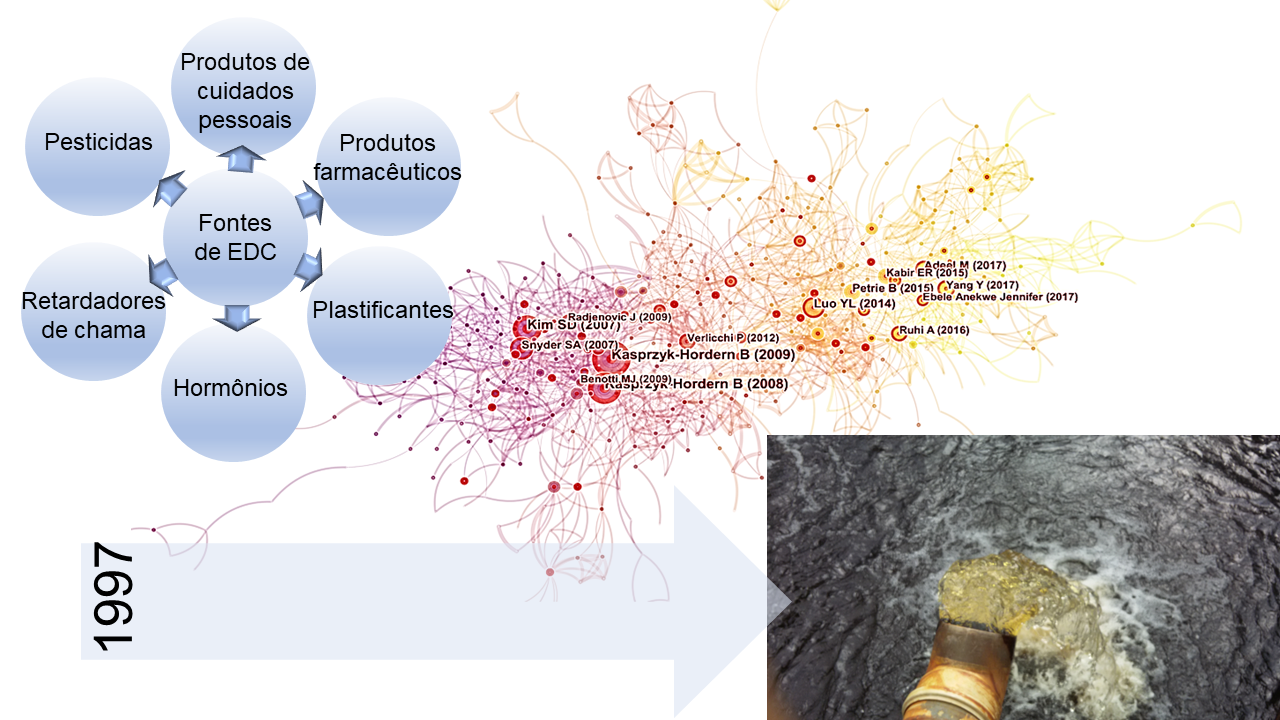
Downloads
Publicado
Edição
Seção
Licença
Copyright (c) 2022 Ana Carolina Bazon Demonel, Maria de Fátima Pereira dos Santos, Maristela Araújo Vicente (Autor)

Este trabalho está licenciado sob uma licença Creative Commons Attribution 4.0 International License.

Todos os trabalhos publicados na Brazilian Journal of Production Engineering (BJPE) estão licenciados sob a Creative Commons Atribuição 4.0 Internacional (CC BY 4.0).
Isso significa que:
-
Qualquer pessoa pode copiar, distribuir, exibir, adaptar, remixar e até utilizar comercialmente os conteúdos publicados na revista;
-
Desde que sejam atribuídos os devidos créditos aos autores e à BJPE como fonte original;
-
Não é exigida permissão adicional para reutilização, desde que respeitados os termos da licença.
Esta política está em conformidade com os princípios do acesso aberto, promovendo a ampla disseminação do conhecimento científico.



2.png)
